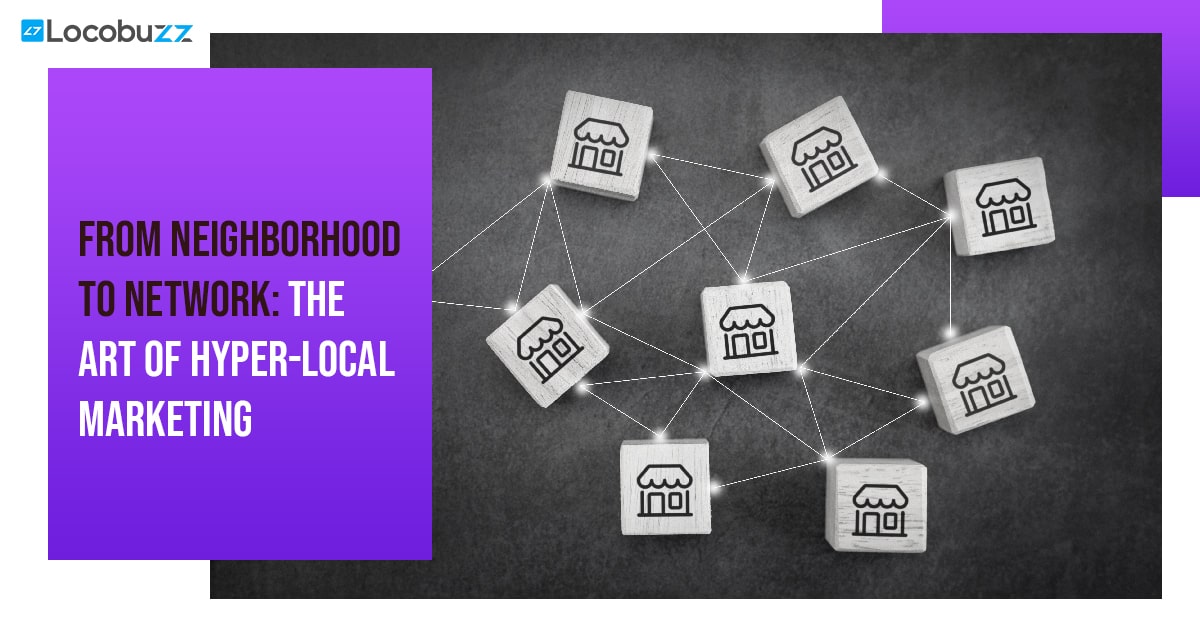Top 18 Tips To Improve Brand Communication Strategy [2024]

In the bustling world of brand communication, businesses battle it out for consumers’ attention like it’s the ultimate showdown. In this scenario, the importance of a strong brand communication strategy cannot be overstated. In a world where customer expectations are constantly changing, businesses must continually improve their strategies in order to remain relevant and competitive.
An organization’s success is largely determined by its ability to effectively communicate its identity, values, and offerings to its target audience via a well-executed brand communication strategy. It entails not only communicating with customers, but also developing genuine relationships with them that foster engagement, loyalty, and trust. With the rise of social media influencers and the proliferation of digital channels, businesses face a competitive environment in which every customer interaction counts.
In today’s society, brands must exercise sincerity, honesty, and reliability in their communications. Customers are becoming more discerning and demanding, and they want genuine relationships with the businesses they choose to support. Companies must ensure that their communication strategies are genuine and persuasive, reflecting their true commitments and values.
Businesses that fail to prioritize and improve their brand communication strategies risk being outperformed by more skilled competitors in this fiercely competitive market. Businesses must embrace innovation, creativity, and agility in their approach to brand communication if they are to succeed in 2024 and beyond. They must also constantly adapt to their audience’s changing needs and expectations. By doing so, they can establish a distinct and memorable brand in the eyes of customers, promoting sustainability and long-term success.
Here is a list of 18 tips to help improve your brand communication strategy and make place for yourself in the market:
Table of Contents
1. Identify Your Target Audience:
Knowing your target demographic is a key component of developing a successful brand communication plan. By delving deep into the psyche of your potential customers, you can uncover invaluable insights that will guide your strategy and foster long-term partnerships. The following are key steps to take in identifying and understanding your audience:
– Utilize data analytics tools: Use sophisticated analytics tools to gain insights into your audience’s characteristics, preferences, and actions. Examining data from sources such as website traffic, social media interactions, and transactional data can help you learn a lot about your target audience’s characteristics and interests.
– Conduct surveys, interviews, and focus groups: These techniques can help you gain a better understanding of your audience by allowing you to interact with them directly. These qualitative research techniques provide invaluable insights into their objectives, challenges, and requirements. By actively listening to their feedback, you can improve your communication strategies and better align with their interests.
– Segment your audience: Because no two clients are alike, it is critical to segment your audience based on characteristics they share, such as psychographics, demographics, and shopping habits. By categorizing your audience into smaller groups, you can develop targeted communication strategies that directly address their specific needs and preferences. Knowing these groups—millennials who value sustainability or baby boomers looking for convenience—allows you to target and tailor your messaging more effectively.
2. Craft Clear and Compelling Key Messages:
Effective brand communication requires you to deliver messages that are intriguing, clear, and resonate with your target audience. Your brand’s core and value are communicated to your audience through these messages, which serve as its voice.
– Define the core messages: Start by identifying the key messages that best represent your brand’s values, unique selling points, and desired outcomes. These statements should clearly explain what distinguishes your brand and why consumers should choose you over competitors.
– Use compelling storytelling techniques and concise language to develop your main points after you’ve determined them. Concentrate on writing stories that evoke emotions and hold your readers’ attention. Make sure the messages you send via videos, social media posts, or website copy are impactful and memorable.
– Test your key messages: Before implementing them across all channels, ensure that they are relevant to your target audience. Consider running A/B tests or focus groups to see how the audience reacts and gather feedback. This will help you hone your messaging and ensure that your brand’s value proposition is clearly communicated.
3. Develop Engaging Content.
Using storytelling skills and a range of content kinds will help you make deeper connections and leave a lasting impact. Working with influencers and employing user-generated content will enhance your strategy’s authenticity and diversity, increasing your brand’s reach and reputation. Adopt these approaches to generate fascinating content that stands out in a crowded digital landscape.
– Create diverse multimedia content formats to keep your audience engaged, such as blog posts, infographics, videos, and interactive experiences. Experiment with different formats to see which one suits the goals of your brand and audience.
– Incorporate storytelling techniques: Using stories to engage your audience more deeply is an excellent strategy. Create narratives using storytelling techniques to elicit emotions, pique interest, and convey your brand’s message in an unforgettable manner. Whether you use storytelling to share behind-the-scenes photos, customer success stories, or brand origin stories, it can help to humanize your brand and strengthen your relationship with your audience.
– Collaborate with influencers, industry experts, or user-generated content: By incorporating user-generated content, industry experts, or influencers, you can make your content strategy more authentic and diverse. Collaborating with influencers or subject matter experts can help your brand gain visibility and legitimacy, while user-generated content can provide authentic experiences and endorsements from satisfied customers. These collaborations can provide new insights and produce engaging content that will appeal to your target audience.
4. Maintain Visual Consistency
A strong brand identity is based on visual consistency, which solidifies your position in the eyes of your target market. This is a how-to for creating consistency throughout all visual interactions and building trust and recognition.
– Establish brand guidelines: Clearly define the colors, typefaces, logos, and imagery that best reflect your company’s identity and core values. These guidelines ensure that all materials have a consistent look and feel by serving as a reference for anyone creating visual assets.
– Use templates and design tools to create visually appealing assets that adhere to your brand’s guidelines. Whether you’re creating email newsletters, social media graphics, or promotional materials, keeping your design elements consistent allows your audience to recognize your brand and develop trust.
– Regularly review and update visual assets: To remain current and relevant to your target audience, review and refresh your visual assets on a regular basis. This could include incorporating new trends, improving design elements, or updating imagery, all while retaining your brand identity.
5. Embrace Authenticity and Transparency:
Effective brand communication is built on two pillars: authenticity and transparency. Ensure their integration by humanizing your brand, maintaining honesty, and responding authentically to feedback.
– Showcase the human side of your brand: Employee biographies, customer testimonials, and behind-the-scenes content can all help to humanize your brand. By providing insights into the people behind your products or services, you can build trust and stronger bonds with your audience.
– Be honest and transparent: Openness promotes trust. Communicate openly about your offerings, costs, and operating procedures. Avoid deceptive or misleading strategies, and make it a daily goal to provide your audience with accurate information. Over time, transparency not only increases credibility but also strengthens your brand’s reputation.
– Respond authentically to feedback: Respond quickly and honestly to customer comments, questions, and concerns. Responding to clients’ questions or concerns demonstrates your commitment to their satisfaction and appreciation for their feedback. Authentic interactions can lead to the development of genuine relationships and increased loyalty among your target audience.
6. Engage with Your Audience:
Effective engagement is essential for building genuine connections with your audience. Pay attention to what they say, respond to questions as soon as possible, and encourage user-generated content. Encourage engagement to build brand loyalty and a sense of community.
– Actively listen: Keep an eye out for reviews, comments, and mentions of your brand on social media to see what others are saying about it. Pay close attention to their opinions, preferences, and concerns to learn more about their needs and interests.
– Respond promptly: When you respond promptly to customer questions, comments, and feedback, you show your audience that you value their opinions and input. Respond to their messages, acknowledge them, and quickly address any questions or concerns they may have. Quick responses demonstrate your commitment to client satisfaction and foster strong relationships with your audience.
– Encourage user-generated content: Encourage your audience to create content about your brand by hosting campaigns, challenges, or contests that will turn them into brand ambassadors. Not only does user-generated content increase engagement, but it also lends your brand legitimacy and authenticity. Encourage creativity and participation in your audience to make them feel important and appreciated.
7. Implement an Omnichannel Approach
Adopting an omnichannel communication strategy will allow you to maximize the impact of your brand. Ensure a consistent customer experience, personalize communications, and seamlessly integrate across platforms.
– Integrate across channels: Integrating your website, email, social media profiles, and offline and online events makes it simple to establish a unified communication campaign. Being present where your audience is allows you to ensure that your message is understood.
– Maintain consistency: Maintain consistency in your brand voice and messaging to provide your audience with a consistent experience across all channels. Whether people see it at an event, on social media, or in email campaigns, they should always be exposed to a consistent message that reflects your brand’s identity.
– Leverage data analytics: Use data analytics technologies to track customer preferences and interactions across multiple channels. By analyzing this data, you may obtain a better knowledge of how your target market interacts with your company and improve your omnichannel strategy for maximum impact.
8. Personalise Communication Experiences
Personalised experiences for your clients can significantly improve the effectiveness of your brand communication strategy. Tailoring interactions to each individual’s interests and habits might help you enhance engagement and develop stronger connections. This tailored strategy increases client loyalty and customer happiness, all of which contribute to your brand’s success.
– Leverage customer data: Segmentation tactics and consumer data might help you obtain a better knowledge of your target population. This enables you to provide recommendations, offers, and communications that are personalized to each customer.
– Utilize dynamic content: Use automation tools and dynamic content to tailor your messages to the behavior, interests, and lifecycle stage of each individual consumer. Conversion rates and engagement can both be increased by offering relevant content at the right time.
– Provide interactive options: Allow users to personalize their communication experiences and preferences via interactive and self-service options. Examples of such services include preference centers, interactive exams, and chatbots that provide individualized recommendations.
Discover how Locobuzz can improve your Brand Communication Strategy!
9. Monitor and Measure Success:
Implement rigorous monitoring and measurement systems to ensure that your brand communication plan is effective. Analyze data on a regular basis to identify areas for improvement and maximize the impact of your approach.
– Define KPIs: Determine your key performance indicators (KPIs), such as conversion rates, brand sentiment, and engagement analytics. You can use these indicators to analyze the efficiency of your communication initiatives and whether they are helping you accomplish your goals.
– Utilize analytics tools: Use dashboards and analytics tools to track performance in real time and understand your audience’s behavior. These tools allow you to monitor the reach, engagement, and conversion of your communication initiatives.
– Conduct analysis: Surveys, A/B testing, and post-campaign analysis should be used on a regular basis to assess the effectiveness of your communication strategies. Examine the collected data to identify patterns, benefits, and chances for growth.
10. Stay Agile and Adaptive
You can successfully overcome hurdles and capture new opportunities by being alert to market and consumer developments. This will ensure that your brand lasts and makes an effect.
– Keep pace with emerging trends: Keep up with the most recent advances in consumer behavior, technology, and trends affecting your industry. Being aware of these factors allows you to plan for change and adjust your communication strategies accordingly.
– Experiment with new approaches: Be willing to experiment with multiple forms, messaging tactics, and channels of communication. Test your audience’s tactics and make adjustments based on the findings to see which ones perform best for you.
– Foster a culture of innovation: Encourage creativity and continual education inside your firm. Establish a culture in which employees are encouraged to take calculated risks when communicating and to make new proposals.
11. Cultivate Brand Advocacy
Building a network of brand advocates can completely transform your approach to brand communication. Building great relationships with committed customers who admire your brand allows you to produce powerful word-of-mouth advertising and a network of brand ambassadors who are eager to tell others about it.
– Identify and nurture loyal customers: Recognize and value clients who have remained loyal to your brand. Interact with them with personalized communications, unique offers, and events to strengthen their loyalty.
– Collaborate with influencers and brand ambassadors: Partner up with people and influencers who share your company’s ideals and have a big following. Motivate them to use their authority and reputation to truly advocate for your company within their target audience.
– Incentivize advocacy: Offer rewards, awards, or loyalty programs to encourage customers to refer your firm to others. This could include exclusive access to events or content, discounts, or freebies.
– Encourage user-generated content: Allow clients to add user-generated material, testimonials, and personal experiences. Feature this material across all of your communication channels to boost your company’s visibility and reach by utilizing the genuine voices of satisfied consumers.
12. Collaborate and Partner
Harness the power of collaboration to amplify your brand communication efforts:
– Form strategic partnerships: Find businesses, influencers, or trade associations that share similar target audiences or ideals. Work together to take advantage of each other’s strengths and widen your horizons.
– Co-create content and campaigns: Collaborate to create events, projects, or content that are relevant to your target audience. Combining resources and creativity allows you to create distinctive experiences that improve engagement and brand exposure.
– Leverage cross-promotion: Investigate co-marketing and cross-promotional opportunities to distribute your message across other channels. To boost visibility and mutual benefits, share each other’s content, leverage each other’s platforms, and reach each other’s audiences.
13. Harness the Power of Storytelling
Use the fascinating power of storytelling to engage your audience and help them form deep ties with your brand. Embrace storytelling as the foundation of your brand communication strategy to motivate, captivate, and build deep connections with your target audience.
– Craft authentic narratives: Tell authentic stories that reflect your brand’s beliefs, mission, and journey. Create stories that resonate with your audience’s thoughts and experiences, whether through the history of your company’s inception, the experiences of your employees, or the effects of your products and services.
– Engage with narrative elements: Character development, narrative arcs, and plot twists are examples of storytelling strategies that can help you write engaging stories that attract and hold your audience’s interest. To make your stories memorable and impactful, incorporate sympathetic characters, relatable hardships, and inspiring endings.
– Integrate storytelling across channels: Integrate narrative into all aspects of your communication strategy, from blog posts and social media updates to product descriptions and client testimonials. By successfully adding storytelling into your brand communication, you can create a coherent story that connects with your audience while also strengthening your brand identity.
14. Prepare for Crisis Communication
Be proactive and strategic in handling potential crises with these key steps:
– Develop a crisis communication plan: Create a clear strategy including roles, responsibilities, and suitable routes of communication for different scenarios. Make sure your group is prepared to deal with any scenario that may arise quickly and efficiently.
– Monitor early warning signs: Keep an eye out for signs of potential problems or arguments on social media, news outlets, and consumer review channels. Early detection provides early intervention, preventing issues from worsening.
– Respond with transparency and empathy: When faced with a crisis, communicate honestly and transparently with your stakeholders. Provide timely updates, respond to concerns, and express compassion for those affected. Transparency and empathy can help rebuild trust and reduce reputational harm.
Embrace your brand’s capacity to stay informed about online comments, both positive and negative, by using Locobuzz’s social listening tool. Use its features to create personalised dashboards, tracking platforms, mentions, and media outlets in areas where negative propaganda is prevalent during crises. Obtain a unified picture of the action in order to take prompt and effective corrective action.
15. Foster Continuous Improvement
If you solicit feedback, keep up with industry trends, and evaluate performance statistics on a regular basis, your brand communication strategy will profit from continuous improvement. To remain relevant and influential over time, cultivate an inventive and adaptable culture that can shift with customer trends and market situations.
– Solicit feedback from all stakeholders: Collect input from clients, staff members, and other relevant stakeholders to identify areas for improvement. Their perspectives can provide valuable feedback on how to improve your communication strategy.
– Conduct regular evaluations: Conduct regular evaluations, assessments, and post-mortems to determine the efficacy of your communication efforts. Examine key indicators, solicit feedback, and identify areas that are operating well and could use improvement.
– Invest in employee development: Provide your personnel with training, professional development opportunities, and knowledge-sharing programs to assist them. Allow them to stay current on industry trends, practice their skills, and provide creative suggestions to boost brand messaging.
16. Balanced Promotion Strategy
17. Brand Salience
Building a Brand A successful brand communication strategy must have salience. It is a brand’s capacity to immediately come to mind when a specific topic is mentioned; it is often referred to as “first to mind” or “top of mind.” This principle is especially obvious in industries such as alcohol.
McDonald’s is another prominent brand in the fast-food industry. McDonald’s has set the benchmark for simple, quick, and fairly priced meals. McDonald’s is typically the first location that comes to mind when people want to get a quick bite to eat on the go. McDonald’s consistent branding efforts over the years, which promoted its unmistakable golden arches, well-known menu items, and extensive presence in communities around the world, led to this association. McDonald’s brand salience is evidenced by its ability to remain at the forefront of consumers’ minds while they search for fast-food options.
18. Brand Positioning
Pricing justification is an important component of brand communication strategy because it influences how consumers perceive a brand and whether they believe it is a high-end or low-cost alternative. This positioning impacts communications to align with the chosen position and aids in the justification of pricing models.
If a corporation portrays itself as a low-cost option while charging high fees, people may become confused and question its validity and aims. On the other side, promoting oneself as a high-end brand while offering low prices may prompt shoppers to become skeptical.
Thus, in order to maintain clarity and client trust, pricing strategies and brand positioning must be consistent. Keeping the brand’s messaging aligned with its target demographic can help develop trust and loyalty in its offerings.
Conclusion
Firms must constantly hone their methods in order to remain competitive in the dynamic world of brand communication in 2024. A solid brand communication plan is necessary to effectively communicate a company’s identity, beliefs, and offers to its target audience. Companies that prioritize honesty, openness, and involvement with their consumers can build long-term relationships that inspire trust and loyalty.
Fostering a culture of continuous development ensures that brand communication techniques continue to be effective and impactful over time. By using and constantly refining these approaches, businesses may successfully manage the complexity of today’s communication landscape while also promoting sustainability and long-term success.






















